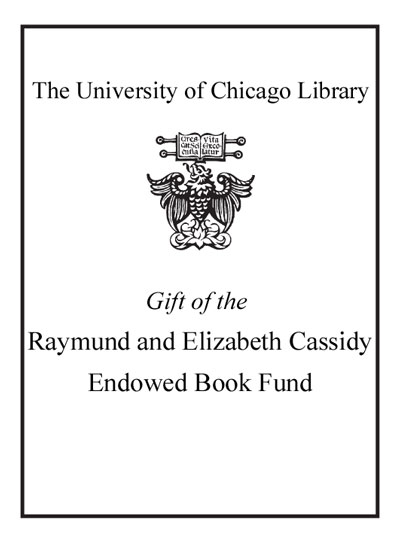Revisionist revolution in Vygotsky studies /
Saved in:
| Author / Creator: | Yasnitsky, Anton, 1972- author, editor. |
|---|---|
| Imprint: | Hove, East Sussex ; New York, NY : Routledge, 2016. |
| Description: | xvi, 316 pages ; 24 cm |
| Language: | English |
| Subject: | |
| Format: | Print Book |
| URL for this record: | http://pi.lib.uchicago.edu/1001/cat/bib/10384597 |
Table of Contents:
- Foreword: how to reconstruct deconstructions
- Acknowledgements
- Part I. Contexts and people
- 1. The archetype of Soviet psychology: from the Stalinism of the 1930s to the "Stalinist science" of our time
- Psychoneurological disciplines in the Soviet Union in the 1920s
- Soviet psychology as a "Stalinist science" from the 1930s to our time
- Archetype of contemporary Russian psychology (1990s-2010s): a sketch for a portrait
- 1. Centralization and control
- 2. Cliquism and patronage
- 3. Ritualism
- 4. Gap between theory and practice
- 5. Intellectual and linguistic isolationism
- 6. Cultism and hagiographies
- Revisionist Vygotskian narrative rewritten against the background of the history of "Stalinist science"
- 2. Unity in diversity: the Vygotsky-Luria circle as an informal personal network of scholars
- The "school of Vygotsky-Leontiev-Luria" narrative
- The Vygotskv-Luria circle as informal personal network
- Phase one (1924-1927): prehistory of the Vygotsky-Luria circle
- Phase two (1927-1931): Vygotsky-Luria circle formation
- Phase three (1931-1934): Vygotsky-Luria circle and the beginning of specialization and separation (Moscow-Kharkov-Lenïngrad)
- Phase four (1934-1936): the circles of Vygotskians and disintegration of the original research program
- Phase five (1936-1941): the beginning of the "Vygotsky-Leontiev-Luria school"
- 3. Deconstructing Vygotsky's victimization narrative: a re-examination of the "Stalinist suppression" of Vygotsldan theory
- Deconstructing the narrative of the "Vygotsky ban"
- Why the narrative of the "Vygotsky ban" is problematic
- Operationalizing "official" bans: the mechanics of Soviet censorship
- Vygotsky's declining publication rate: multiple meanings?
- Pedology as a possible culprit: the 1936 decree
- Vygotsky's posthumous legacy and the many meanings of the ban
- Part II. Texts and legacy
- 4. Vygotsky the published: who wrote Vygotsky and what Vygotsky actually wrote
- English-language publication record
- Vygotsky's published psychological works of 1924-1936: general overview
- The case of Thinking and speech (1934)
- Vygotsky's self-assessment
- Vygotsky's autobiographic official documents and publications
- Vygotsky's private documents and correspondence
- "The lost works"
- Conclusion: Vygotsky's foundational works
- 5. Vygotsky the unpublished: an overview of the personal archive (1912-1934)
- The main reasons to study Vygotsky's personal archive
- General characteristics, of the personal notes
- Outside appearance and degree of preservation
- Special characteristics of the work with Vygotsky's notes
- The most important archival documents: series of notes, exercise books and notebooks, separate notes, letters
- Notes from the years 1912-1930
- Exercise books and notebooks
- Various notes
- Letters
- Notes from 1930 to 1934
- Series of documents
- The notebooks
- Scattered notes
- Letters
- Vygotsky's last note
- 6. "The way to freedom": Vygotsky in 1932
- The plan for the unwritten book On the question of the study of consciousness
- Remarks about the psychophysical problem
- Propositions for the talks by Vygotsky's collaborators
- Part III. Holism and transnationalism
- 7. Translating Vygotsky: some problems of transnational Vygotskian science
- A transnational history of Vygotsky in context
- The French connection
- Anglo-Saxon ties: a Cold War Story
- The transnational Vygotskian network in action
- Typology of Vygotsky's texts and sources of error
- Types of error
- Inaccuracies
- Suppression of terms or passages
- Suppression of names
- Unidentified or suppressed citations
- Insertions
- Multiple retranslations
- Conclusion: the "Six Commandments" for the translator
- 8. Did Uzbeks have illusions? The Luria-Koffka controversy of 1932
- Alexander Luria: "Uzbeks have no illusions!"
- The historiography of the problem
- The expeditions to Central Asia of 1931 and 1932
- Kurt Koffka: "Uzbeks do have illusions!"
- Why was Luria's study not published? The reception of Central Asian research in the Soviet Union in the 1930s
- Why did Luria interpret the data the way he did? The case of Vygotsky's and Luria's vulgar Marxism
- What did Luria actually (fail to) sec in Central Asia in 1931-1932? The cultural-historical psychology of Wertheimer and Koffka
- 9. A transnational history of "the beginning of a beautiful friendship": the birth of the cultural-historical Gestalt psychology of Alexander Luria, Kurt Lewin, Lev Vygotsky, and others
- 1925-1929: Vygotsky's and Luria's trips to Europe and their consequenccs
- 1929-1930: IX International Congress of Psychology and the "holistic revolution"
- 1930-1931 and later: migrations of German Gestaltists
- 1930s: "holistic revolution" in a Lewinian key
- 1934-1936: Vygotsky Festschrift that never was
- 1936: "Topologische Meeting, Moskau/Charkow"
- Epilogue: "Stalinist science" in action
- Epilogue
- 10. "Lost in translation": talking about sense, meaning, and consciousness
- Appendices
- Appendix A. Bibliography of Vygotsky's published works. Vygotsky's published works: a(n almost) definitive bibliography
- Publications of 1916-1923
- Publications of 1924-1933
- Posthumous (i.e. 1934 and after) and foreign publications
- Appendix B. Vygotsky's and Soviet pedological publications, 1924-1936
- Appendix C. Vygotsky-Luria circle; key protagonists
- Abbreviations and archival and documentary sources
- Notes
- References
- Index

